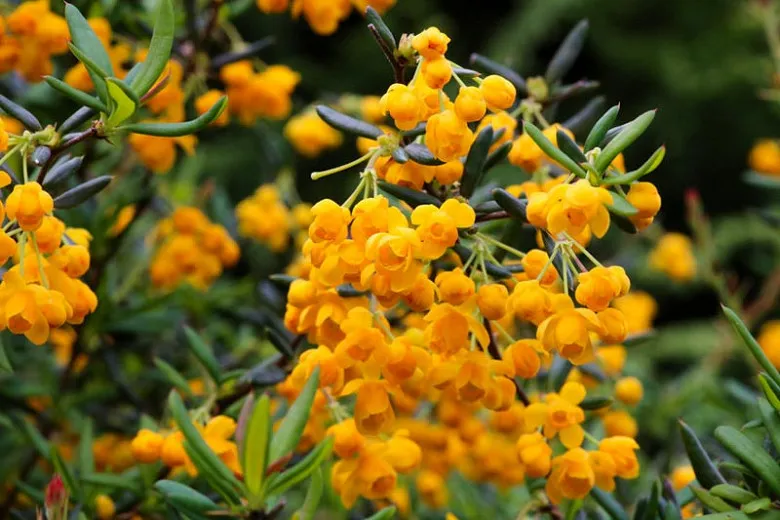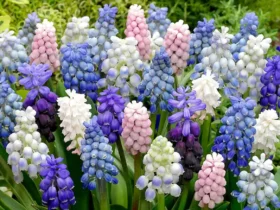Berberis x stenophylla, commonly known as Rosemary Barberry, is a medium-sized evergreen shrub known for its graceful arching branches, fragrant golden-yellow flowers, and attractive blue-black berries.

Here are the key features and care guidelines for this plant:
Description:
- Rosemary Barberry features gracefully arching branches covered with narrow, spine-tipped leaves. The leaves are approximately 1 inch (2.5 cm) long and have a deep green color on the upper side and a blue-green hue on the underside.
- The plant produces profuse clusters of bright golden-yellow flowers in late spring to early summer. These fragrant flowers dangle along the stems, adding visual and olfactory appeal.
- After flowering, small blue-black berries develop on the plant. These berries are not only ornamental but also provide a food source for birds.
Size:
- Rosemary Barberry typically grows to a height of 8-10 feet (240-300 cm) and has a width of 12-15 feet (360-450 cm).
Cultural Requirements:
- This shrub thrives in full sun to part shade. It can adapt to various soil types, but it’s important that the soil is well-draining and not excessively wet or soggy.
- Once established, Rosemary Barberry is drought-tolerant and requires little additional watering.
- For optimal fruit production, plant the shrub in full sun.
- It is suitable for a variety of garden settings, including banks, slopes, coastal gardens, cottage gardens, and as an informal hedge or screen.
Pest and Disease Considerations:
- Rosemary Barberry is generally free from serious pest or disease issues. However, it’s recommended to be watchful for potential problems like berberis sawfly and powdery mildew.
- The plant is considered deer-resistant, making it less likely to be browsed by deer.
Pruning and Maintenance:
- To maintain the health and appearance of the shrub, prune it immediately after flowering. This helps to shape the plant and remove any dead or damaged growth.
Propagation:
- Rosemary Barberry can be propagated from seed or from semi-hardwood cuttings. Collect seeds or take cuttings from the plant to start new individuals.
Safety Considerations:
- Ingesting parts of the plant may cause mild stomach upset, so it’s advisable to keep it out of reach of children and pets.
In conclusion, Berberis x stenophylla, or Rosemary Barberry, is an evergreen shrub with a combination of attractive foliage, fragrant flowers, and berries. Its versatility in various garden settings, ease of care, and resistance to pests and diseases make it a valuable addition to landscapes. Whether used as a specimen, hedge, or slope stabilizer, Rosemary Barberry can contribute beauty and interest to a range of garden designs.








